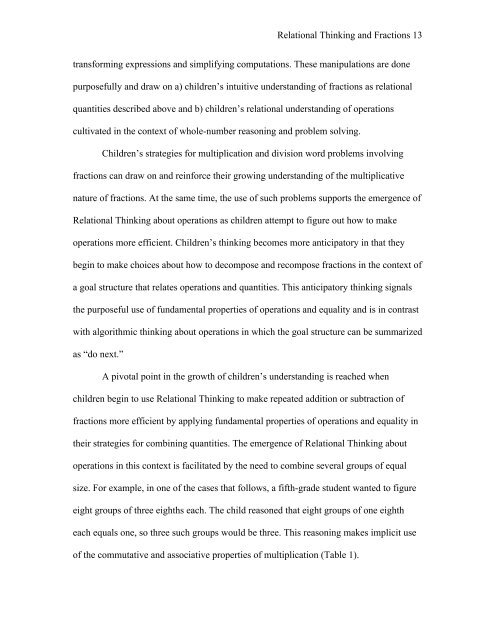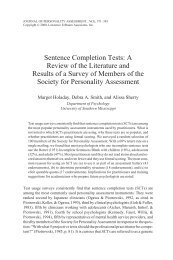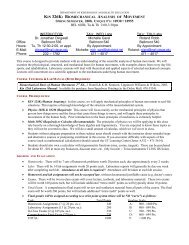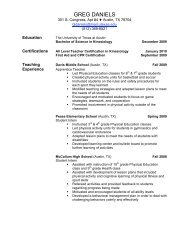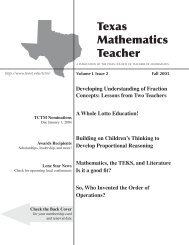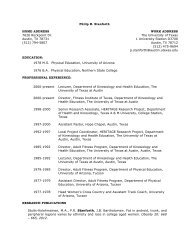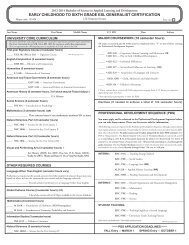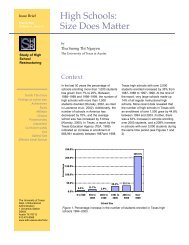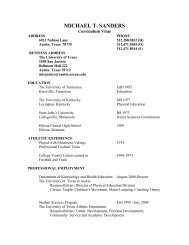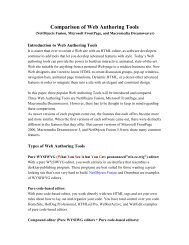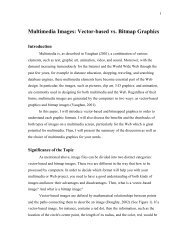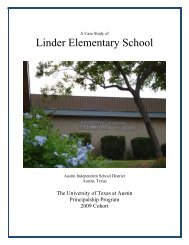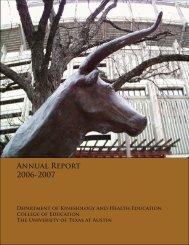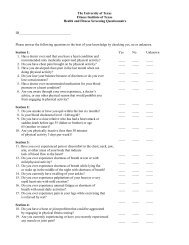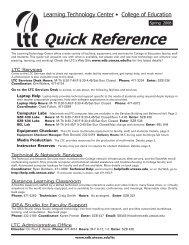The Algebraic Nature of Fractions: Developing Relational Thinking ...
The Algebraic Nature of Fractions: Developing Relational Thinking ...
The Algebraic Nature of Fractions: Developing Relational Thinking ...
You also want an ePaper? Increase the reach of your titles
YUMPU automatically turns print PDFs into web optimized ePapers that Google loves.
<strong>Relational</strong> <strong>Thinking</strong> and <strong>Fractions</strong> 13<br />
transforming expressions and simplifying computations. <strong>The</strong>se manipulations are done<br />
purposefully and draw on a) children’s intuitive understanding <strong>of</strong> fractions as relational<br />
quantities described above and b) children’s relational understanding <strong>of</strong> operations<br />
cultivated in the context <strong>of</strong> whole-number reasoning and problem solving.<br />
Children’s strategies for multiplication and division word problems involving<br />
fractions can draw on and reinforce their growing understanding <strong>of</strong> the multiplicative<br />
nature <strong>of</strong> fractions. At the same time, the use <strong>of</strong> such problems supports the emergence <strong>of</strong><br />
<strong>Relational</strong> <strong>Thinking</strong> about operations as children attempt to figure out how to make<br />
operations more efficient. Children’s thinking becomes more anticipatory in that they<br />
begin to make choices about how to decompose and recompose fractions in the context <strong>of</strong><br />
a goal structure that relates operations and quantities. This anticipatory thinking signals<br />
the purposeful use <strong>of</strong> fundamental properties <strong>of</strong> operations and equality and is in contrast<br />
with algorithmic thinking about operations in which the goal structure can be summarized<br />
as “do next.”<br />
A pivotal point in the growth <strong>of</strong> children’s understanding is reached when<br />
children begin to use <strong>Relational</strong> <strong>Thinking</strong> to make repeated addition or subtraction <strong>of</strong><br />
fractions more efficient by applying fundamental properties <strong>of</strong> operations and equality in<br />
their strategies for combining quantities. <strong>The</strong> emergence <strong>of</strong> <strong>Relational</strong> <strong>Thinking</strong> about<br />
operations in this context is facilitated by the need to combine several groups <strong>of</strong> equal<br />
size. For example, in one <strong>of</strong> the cases that follows, a fifth-grade student wanted to figure<br />
eight groups <strong>of</strong> three eighths each. <strong>The</strong> child reasoned that eight groups <strong>of</strong> one eighth<br />
each equals one, so three such groups would be three. This reasoning makes implicit use<br />
<strong>of</strong> the commutative and associative properties <strong>of</strong> multiplication (Table 1).


